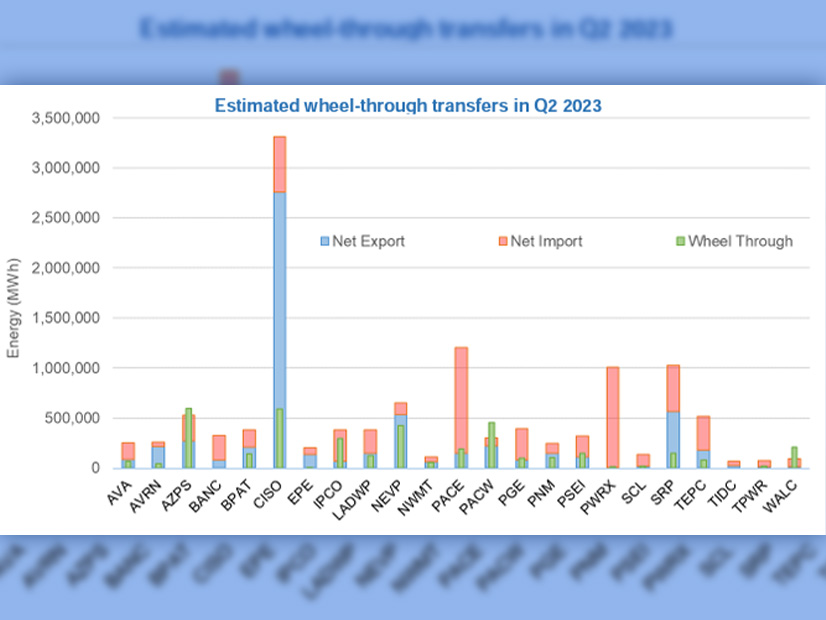CAISO’s Western Energy Imbalance Market topped $4 billion in cumulative benefits for its participants in the second quarter of 2023, just six months after it topped the $3 billion mark at the end of 2022, the ISO said this week.
The WEIM generated nearly $799 million in benefits in the first half of this year, including $380 million in Q2, bringing its total benefits to $4.2 billion since it began in 2014. It reached $3.4 billion in cumulative benefits in the fourth quarter of 2022.
The market’s benefits come primarily from transfers of lower-cost energy between Western entities, as well as operational efficiencies and increased uptake of solar and wind power.
The benefits of the WEIM, a real-time interstate trading market, grew rapidly as more participants joined in recent years. It now includes 22 entities in 11 states and British Columbia that collectively represent about 80% of load in the Western Interconnection.
Those with the most benefits in Q2 were CAISO, with $70 million in benefits; NV energy, with $46 million; and PacifiCorp, with $37.5 million.
The second-quarter results were notable for the large quantities of exports from California. CAISO had net exports of 2,758,377 MWh, nearly five times as much as the next-highest exporter, Arizona’s Salt River Project, which had 564,023 MWh. NV Energy came in third with 531,979 MWh. Net exports for all other WEIM participants fell well below those figures.
Inexpensive solar energy flowing from California in the middle of the day was a likely cause of CAISO’s vast net exports. The state has been adding utility-scale solar arrays at a fast pace as it tries to meet its 100% clean energy goal by 2045.
California’s ample spring sunshine and moderate temperatures combined to produce an excess of solar energy in the second-quarter months from April to June.
CAISO statistics show that solar output peaked May 23 at more than 15,000 MW, exceeding a 14,000-MW peak in May 2022. Then, on June 13, the ISO again broke its record for solar production with 15,718 MW.
With the latest numbers in, CAISO is hoping the proven benefits of the WEIM will convince participants to sign up for its planned extended day-ahead market (EDAM). The WEIM EDAM is likely to face stiff competition from SPP’s Markets+ offering, which is planned to include real-time and day-ahead markets.
CAISO expects to file its EDAM tariff language with FERC this month. It recently announced a public EDAM Forum on Aug. 30 in Las Vegas, which it will co-host with PacifiCorp, NV Energy, Southern California Edison and the Balancing Authority of Northern California.
WEIM cofounder PacifiCorp has already committed to join the EDAM and several other entities are nearing a decision, CAISO said.
“The forum’s panel discussions will allow a broad spectrum of utility and thought leaders to delve into the potential benefits and outstanding questions regarding EDAM participation, its evolution, and how it could transform and optimize energy delivery in the future,” CAISO said in its announcement.


